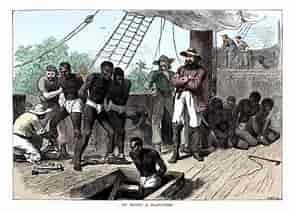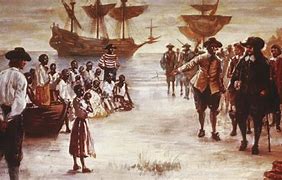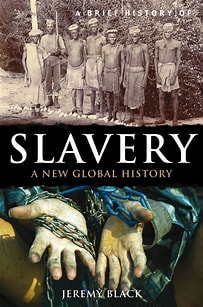Introduction
Slavery is one of the darkest chapters in human history, a global tragedy that has affected millions across different cultures and eras. It’s a topic that evokes strong emotions, and rightfully so. Imagine being stripped of your freedom, forced to work against your will, and treated as property rather than a human being. This grim reality has been experienced by countless individuals throughout history. In this article, we’ll explore the complex history of slavery, examining its origins, various forms, and the lasting impacts it has had on societies worldwide.
Understanding Slavery
What Is Slavery?
At its core, slavery is a system where individuals are owned by others, deprived of personal freedom and compelled to perform labor or services. This exploitation can take many forms, from forced labor in agriculture to human trafficking for sexual exploitation.

The Legal Definition
Legally, slavery is defined as the condition in which a person is forced to work for another without pay and is treated as property. This definition encompasses various practices such as chattel slavery, debt bondage, and forced labor.
The Origins of Slavery
Ancient Civilizations
Slavery dates back thousands of years and has been practiced in various forms across ancient civilizations. In Egypt, Greece, and Rome, slaves were integral to society, performing tasks ranging from household chores to skilled labor.
Egypt: The Builders of Pyramids
In ancient Egypt, slaves were often prisoners of war or individuals who fell into debt. They played a crucial role in constructing monumental structures like the pyramids, showcasing both their labor and the societal hierarchy that permitted such exploitation.
Greece: A Society Built on Slavery
In ancient Greece, slavery was commonplace. Citizens relied on enslaved people for domestic work and agricultural labor. Notably, philosophers like Aristotle justified slavery as a natural condition for certain people.

The Transatlantic Slave Trade
A Dark Chapter Begins
The transatlantic slave trade began in the 16th century and lasted until the 19th century. It involved the forced transportation of millions of Africans to the Americas to work on plantations.
The Middle Passage
The journey across the Atlantic Ocean, known as the Middle Passage, was brutal. Enslaved individuals were packed tightly into ships under horrific conditions, leading to high mortality rates due to disease and malnutrition.
The Role of European Powers
European nations played a significant role in perpetuating slavery. Countries like Portugal, Spain, Britain, and France established trading posts along the African coast to facilitate the capture and transport of enslaved people.
Forms of Slavery Throughout History
Chattel Slavery
Chattel slavery refers to a system where individuals are treated as personal property that can be bought or sold. This form was prevalent in the Americas during the transatlantic slave trade.
Debt Bondage
Debt bondage occurs when an individual pledges themselves as security for a loan. This often leads to a cycle of debt that is nearly impossible to escape.
Forced Labor
Forced labor involves individuals being compelled to work against their will under threat of punishment. This practice continues today in various industries around the world.
Abolition Movements
The Fight Against Slavery
The abolition movement gained momentum in the late 18th and early 19th centuries. Activists from various backgrounds fought tirelessly for the freedom of enslaved individuals.
Key Figures in Abolition
- Frederick Douglass: An escaped slave who became a prominent activist advocating for abolition.
- Harriet Tubman: Known for her role in the Underground Railroad, she helped many enslaved people escape to freedom.
- William Wilberforce: A British politician who played a crucial role in passing legislation to abolish slavery in the British Empire.
Legislative Changes
The abolitionist movement led to significant legal changes:
- The British Slavery Abolition Act (1833): This act abolished slavery throughout most of the British Empire.
- The Thirteenth Amendment (1865): This amendment abolished slavery in the United States.

The Legacy of Slavery
Economic Impact
The legacy of slavery has left deep economic scars on societies. In many regions where slavery was practiced, economies were built on exploitative practices that persist today.
Wealth Disparities
The wealth generated from slave labor contributed to vast disparities between races and social classes that continue to affect communities today.
Social Implications
Slavery has had profound social implications. The systemic racism rooted in slavery has perpetuated discrimination and inequality long after its abolition.
Cultural Trauma
Communities affected by slavery often experience cultural trauma that impacts identity and social cohesion. Healing from this trauma requires acknowledgment and education about historical injustices.
Modern-Day Slavery
Human Trafficking
Despite global efforts to combat slavery, modern forms persist today through human trafficking networks that exploit vulnerable populations for labor or sexual exploitation.
Statistics on Human Trafficking
According to estimates by organizations like the International Labour Organization (ILO), millions are trapped in modern slavery worldwide—an alarming reminder that this issue is far from resolved.
Efforts Toward Eradication
Numerous organizations work tirelessly to combat modern-day slavery:
- Polaris Project: Focuses on combating human trafficking through advocacy and support services.
- UNODC: The United Nations Office on Drugs and Crime works globally to address human trafficking issues through legislation and awareness campaigns.
Education and Awareness
The Importance of Education
Educating communities about the history and implications of slavery is vital for preventing its recurrence. Awareness campaigns can help dismantle stereotypes and promote understanding among diverse populations.
Incorporating History into Curriculum
Integrating comprehensive studies on slavery into educational curricula helps future generations understand its complexities and consequences—ensuring that history does not repeat itself.
Conclusion
The history of slavery is a profound tragedy that has left an indelible mark on humanity. From ancient civilizations to modern-day human trafficking, this issue remains relevant today. By acknowledging our past and educating ourselves about these injustices, we can work toward a future that values freedom and equality for all individuals. Understanding this history is not just an academic exercise; it’s a moral imperative that calls us all to action against oppression in any form it takes.
FAQs About the History of Slavery
1: What was chattel slavery?
Chattel slavery refers to a system where individuals are treated as personal property that can be bought or sold, commonly practiced during the transatlantic slave trade.
2: How did abolition movements impact society?
Abolition movements led to significant legal changes that abolished slavery in many countries while raising awareness about human rights issues.
3: What are some modern forms of slavery?
Modern forms include human trafficking for labor or sexual exploitation, debt bondage, and forced labor in various industries worldwide.
4: Who were key figures in the abolition movement?
Prominent figures included Frederick Douglass, Harriet Tubman, and William Wilberforce—each playing vital roles in advocating for freedom.
5: Why is it important to educate about slavery?
Education fosters understanding about historical injustices while promoting empathy and awareness—essential for preventing similar abuses in the future.


